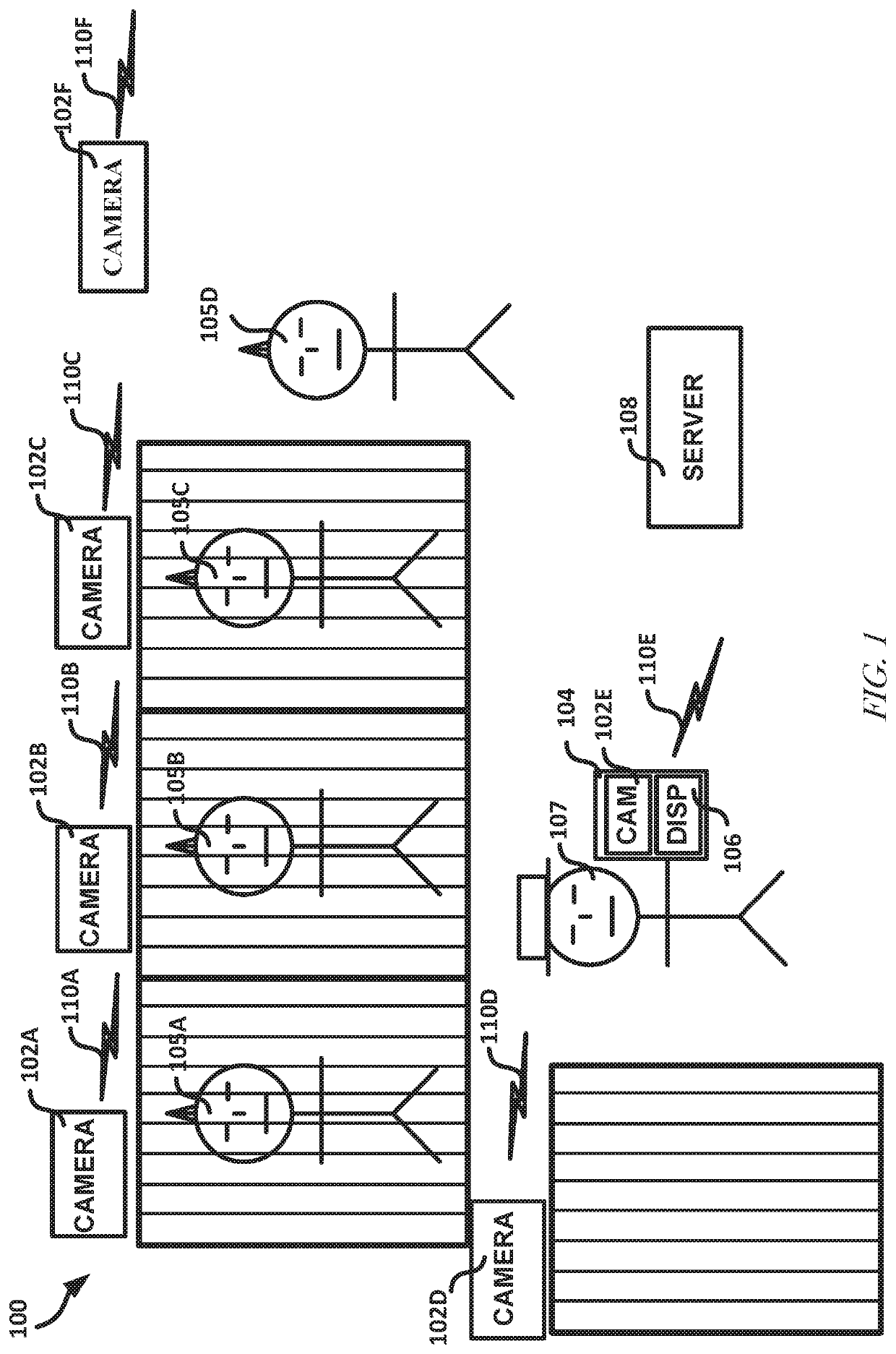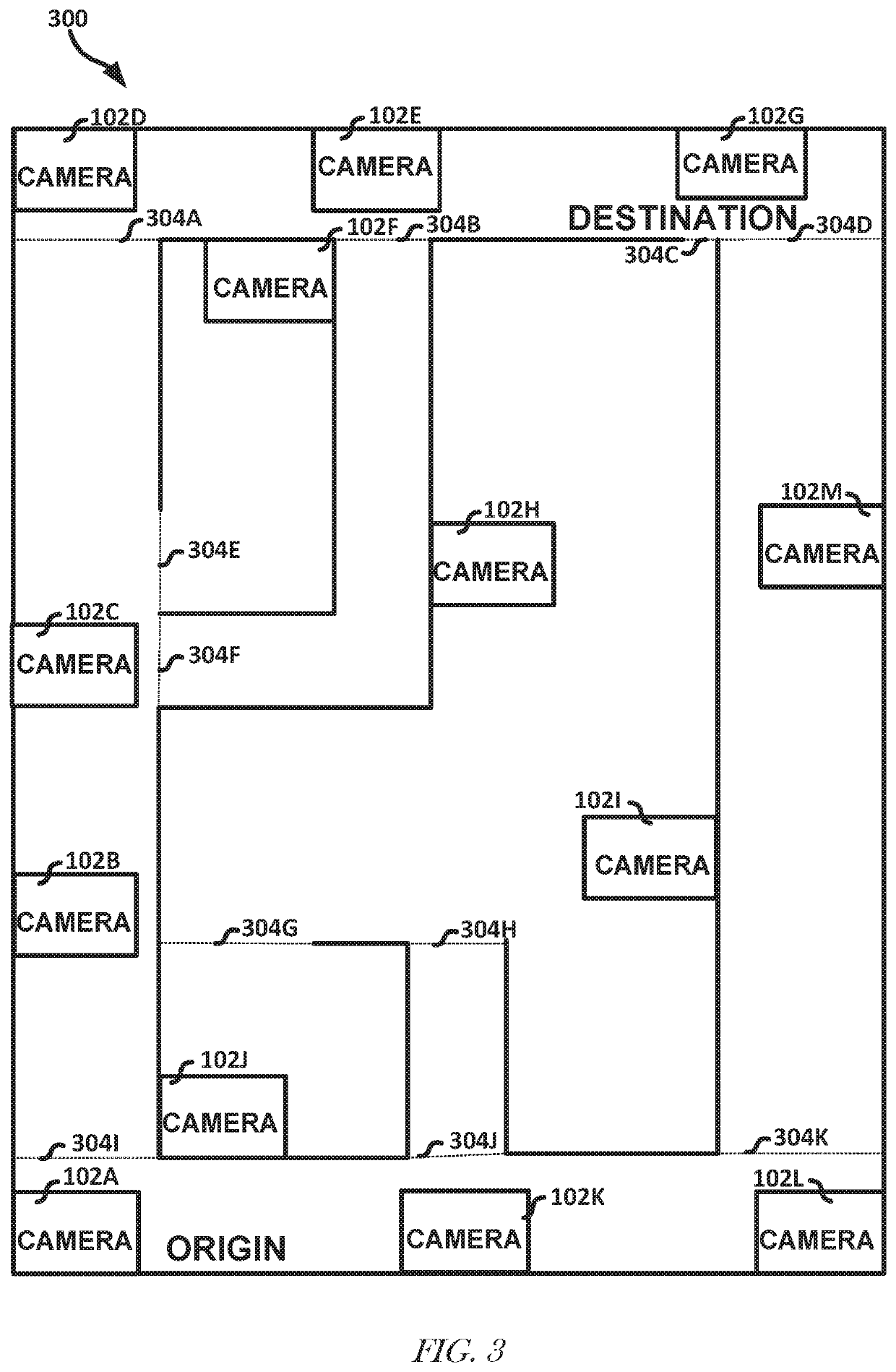Monitoring inmate movement with facial recognition
a technology of facial recognition and inmate movement, which is applied in the field of monitoring inmate movement with facial recognition, can solve the problems of inmates being hostile to wearing the transponder, rfid technology is problematic, and the office staff at secure facilities face many challenges in monitoring the whereabouts of inmates
- Summary
- Abstract
- Description
- Claims
- Application Information
AI Technical Summary
Benefits of technology
Problems solved by technology
Method used
Image
Examples
example 1
[0114 includes a system comprising cameras situated about a correctional facility to generate pixel data including first pixels corresponding to a face of a first offender in the correctional facility and an environment around the first offender corresponding to a location within the field of view of the camera, and a server configured to receive the pixel data from the cameras through a network connection, transmit the received data to a recognition service through the network, and receive an alert from the alert service that, based on facial recognition and location detection analysis performed on the pixel data by the recognition service, indicates a monitoring rule associated with the first offender is violated, an offender identification associated with the first offender, a location of the first offender in the correctional facility, and an indication of the monitoring rule violated.
[0115]In Example 2, Example 1 further includes, wherein the pixel data includes second pixels c...
example 20
[0133 includes a system comprising a first network of a correctional facility to provide pixel data from cameras of the correctional facility, a second network including a database including a monitoring rule stored thereon that indicates a first offender at the correctional facility and a location or second offender that the first offender is restricted from in the correctional facility, and a server to receive the pixel data, and perform object recognition and / or facial recognition on the pixel data and identify the first offender and (1) the location of the first offender or (2) the second offender based on the pixel data and generate an alert to correctional facility personnel in response to detecting the monitoring rule is violated based on the identification.
[0134]In Example 21, Example 20 further includes, wherein the pixel data includes pixels corresponding to a distinct of the second offender and the monitoring rule includes data identifying the first offender and the secon...
example 29
[0142 includes a method of performing the operations of the system of at least one of Examples 20-28.
[0143]Example 30 includes a non-transitory machine-readable medium including instructions that, when executed by a machine, cause the machine to perform operations of the method of Example 29.
PUM
 Login to View More
Login to View More Abstract
Description
Claims
Application Information
 Login to View More
Login to View More - R&D
- Intellectual Property
- Life Sciences
- Materials
- Tech Scout
- Unparalleled Data Quality
- Higher Quality Content
- 60% Fewer Hallucinations
Browse by: Latest US Patents, China's latest patents, Technical Efficacy Thesaurus, Application Domain, Technology Topic, Popular Technical Reports.
© 2025 PatSnap. All rights reserved.Legal|Privacy policy|Modern Slavery Act Transparency Statement|Sitemap|About US| Contact US: help@patsnap.com



